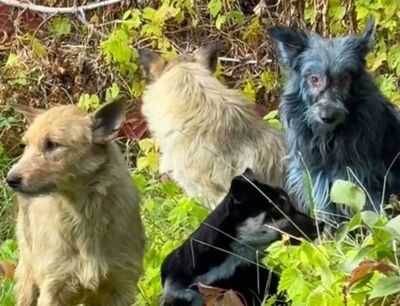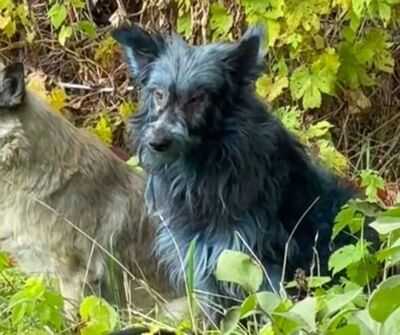Caretakers looking after the stray dogs living around Chernobyl have made a startling discovery - several of the animals have suddenly turned blue. The group, Dogs of Chernobyl, which cares for hundreds of dogs in the Ukrainian radioactive exclusion zone, shared a video showing packs of animals with patches, and in some cases, coats of bright blue fur, a fact that has left experts baffled. "We are not sure exactly what is going on," the team admitted.
"They were not blue last week. We do not know the reason, and we are attempting to catch them so we can find out what is happening," the team wrote alongside the footage. "Most likely, they're getting into some sort of chemical." The organisation provides the animals with food and medical attention each year. These dogs are the descendants of pets left behind when residents fled after the 1986 Chernobyl nuclear disaster, one of the most catastrophic nuclear accidents in history.
Despite the alarming colour, the organisation - part of the Clean Futures Fund - reassured followers that the dogs appeared "very active and healthy".
Social media users were quick to speculate about the sudden colour change. One TikTok commenter wrote: "That blue-tinged fur is probably from external chemical contamination, which can be washed off".
Another said: "Surprised these dogs are still fertile after all these years living near contamination".
While the blue dogs remain a mystery, scientists have long been studying how animals around the Chernobyl site have adapted to extreme conditions.

The 1986 explosion at the Chernobyl Nuclear Power Plant in northern Ukraine released vast amounts of radioactive material into the environment, forcing the evacuation of nearby towns and creating the so-called Chernobyl Exclusion Zone (CEZ). In the absence of people, wildlife has flourished, despite lingering radiation levels around six times higher than what's considered safe for humans.
Recent studies suggest some of these animals have even evolved to survive the toxic environment. A 2024 study found that Chernobyl's dogs have developed unique genetic traits that make them unusually resilient to radiation, heavy metals and pollution.
Researchers from Columbia University, led by environmental health scientist Norman J Kleiman, analysed blood samples from 116 semi-feral dogs living near the plant and in Chernobyl City. Their findings revealed two genetically distinct dog populations unlike any others, indicating that generations of exposure may have triggered lasting genetic adaptations.
"Somehow, two small populations of dogs managed to survive in that highly toxic environment," Mr Kleiman said. "We're taking the first steps towards understanding how chronic exposure to multiple environmental hazards may have impacted these populations."
You may also like

'Serious challenge to democratic process': Kerala CM urges resistance to SIR; calls it violation of Article 326

Japanese prime minister tells Trump she'll nominate him for a Nobel Prize

Dev Uthani Ekadashi: On the day of Dev Uthani Ekadashi, definitely do these remedies related to Tuls..

Bangladesh, Pakistan boost trade ties after two decades: Dhaka gets access to Karachi Port; move amid frayed ties with India

Milly Alcock's Supergirl Reshoots With David Corenswet Could Fix CW's Melissa Benoist Disaster







